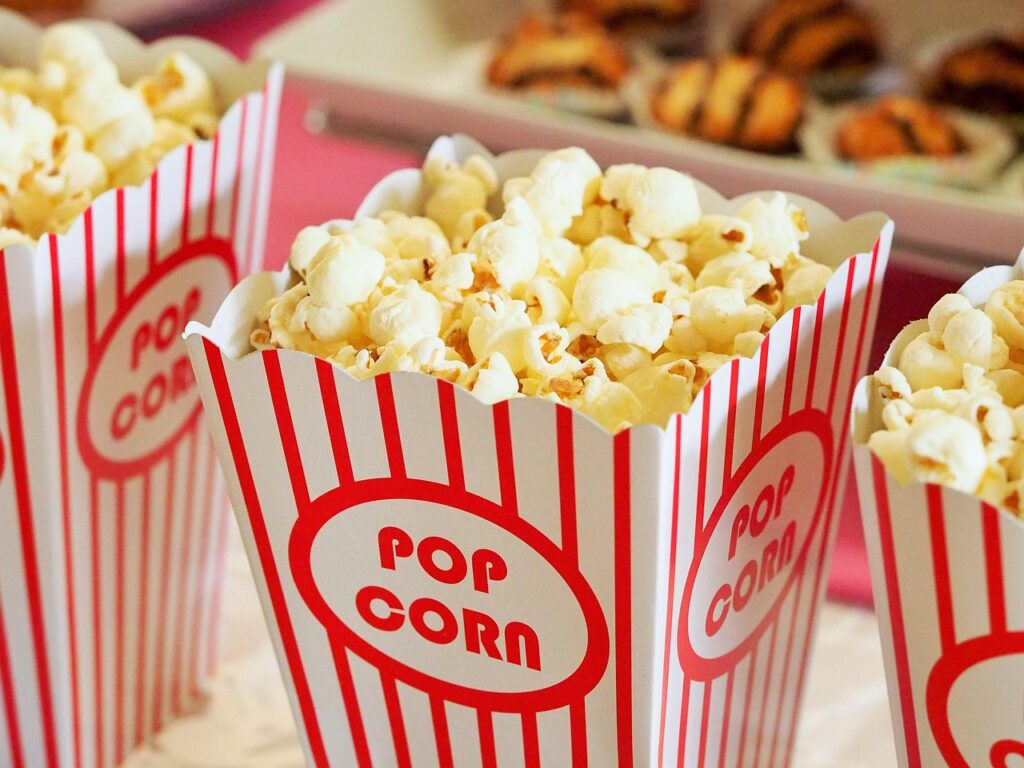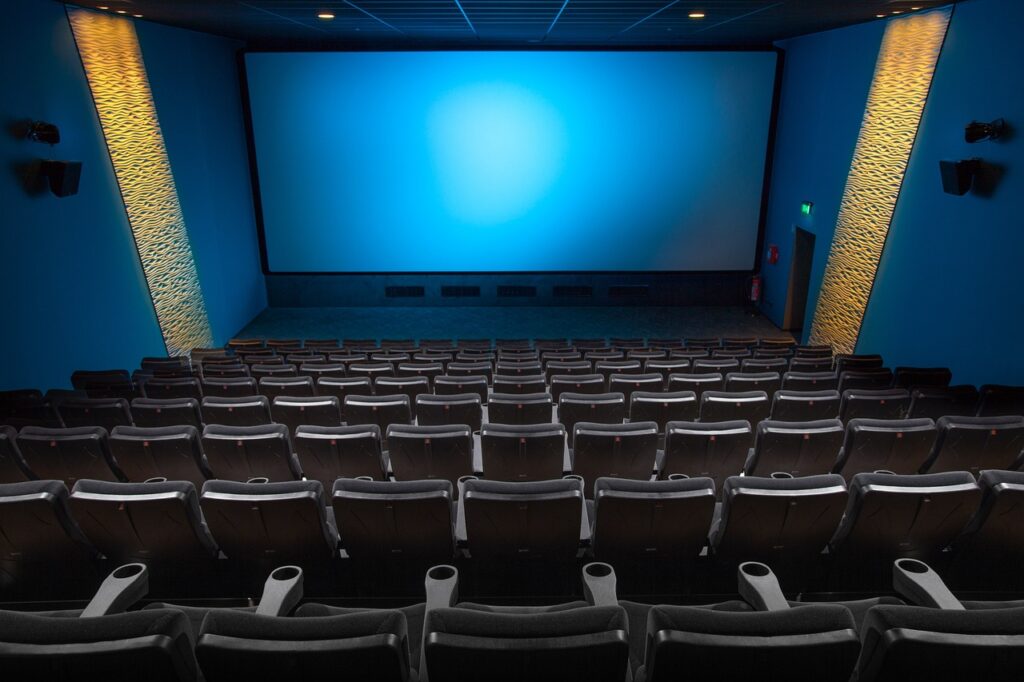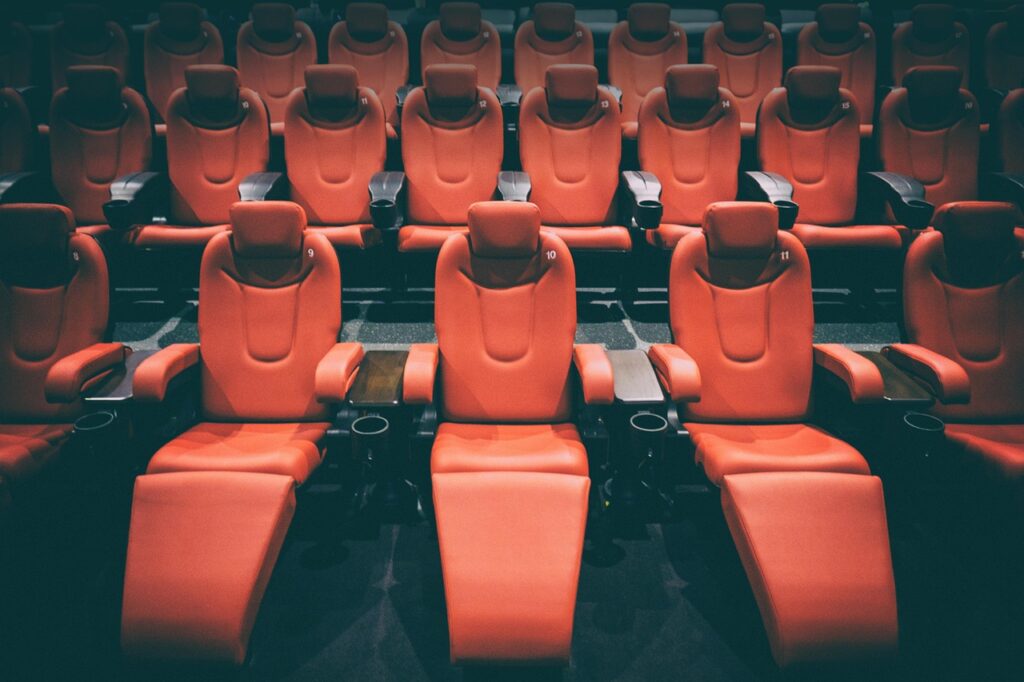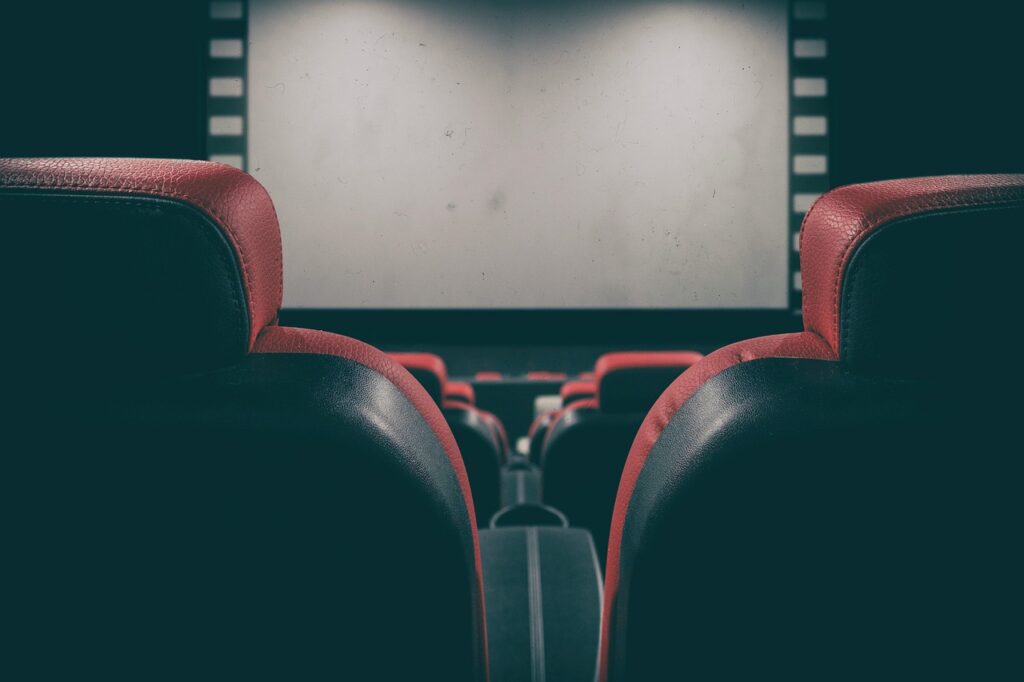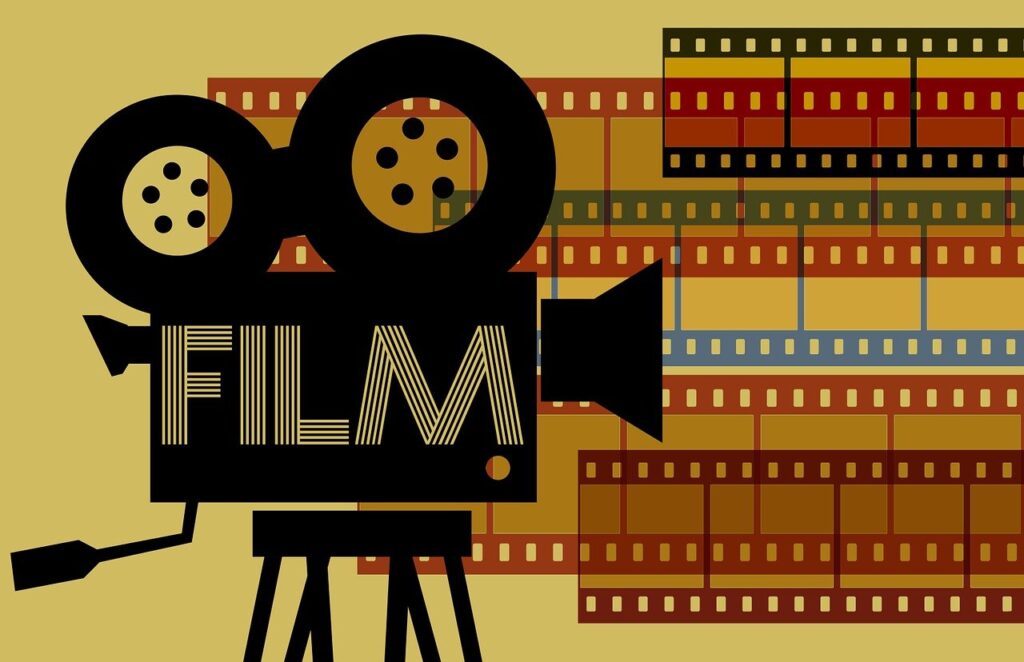For many, the allure of the silver screen is synonymous with the irresistible aroma of freshly popped corn, a frosty drink, and perhaps a handful of candy. This cherished ritual, often seen as a simple accompaniment to the cinematic experience, is, in fact, the cornerstone of a complex, multi-billion-dollar industry’s financial survival. While blockbusters like “Avatar: The Way of Water” grab headlines for their box office prowess, the true story of movie theater profitability is far more nuanced, often centered on an unexpected, yet incredibly lucrative, star: the concession stand.
Behind the gleaming marquees and plush seating, movie theaters face an uphill battle. They grapple with empty seats, substantial debt loads, and intense competition from streaming services. Despite these challenges, many chains are not just surviving but finding innovative ways to generate significant revenue, largely by redefining what a trip to the movies entails. This in-depth look reveals the surprising financial mechanics at play, moving beyond the obvious ticket purchase to explore the less-talked-about, yet far more profitable, elements that keep the projector lights on.
This article will delve into the sophisticated strategies theaters employ to maximize their income. We will uncover how they transform seemingly simple snacks into economic powerhouses, strategically price their offerings, leverage technology, and even venture into entirely new entertainment avenues. Prepare to discover the hidden truths about the financial engine driving your local cinema, demonstrating why the $10 item you grab before the movie starts is far more critical than you ever imagined.
1. **The Unseen Profit Engine: Concession Stand Dominance**The single most impactful element driving movie theater profitability, often hidden in plain sight, is the concession stand. While movie tickets might represent a larger slice of total revenue, the profit margins on snacks and beverages are astronomically higher, making them the true financial backbone of the industry. The sheer volume and markup on items like popcorn and soda contribute disproportionately to a theater’s bottom line, fundamentally impacting its economic survival.
Consider the humble popcorn. It costs less than $0.50 to prepare a serving, yet once scooped into a bucket with butter-flavored oil, it can sell with an astonishing 1,275% markup. Similarly, items like soda boast profit margins around 85%. This isn’t just about high prices; it’s about a business model where, as financial guru Humphrey Yang revealed, theaters inflate the average price of movie theater popcorn by 1275%. An average American spends $16.43 on concession items per visit, often more than on the ticket itself, according to a 2023 survey by Casino.org.
For many theaters, especially smaller independent ones, concessions are not just a revenue stream; they are *the* revenue stream. While larger chains like AMC might earn 35% from concessions, compared to 65% from ticket sales, small theaters can make as much as 80% of their revenue from concessions and only 20% from tickets. Industry estimates suggest that concession sales can represent up to 70-80% of a theater’s net profit, making optimizing these sales a primary strategy for cinema profit maximization.
The captive audience aspect further solidifies concessions’ power. Once inside the auditorium, customers have limited options for snacks, creating an environment where they are more inclined to pay the listed prices. This unique market dynamic allows theaters to maintain these significant markups, ensuring that every bag of popcorn and every sugary drink plays a crucial role in funding the overall operational costs, from rent and wages to electricity.

2. **The Hidden Dynamics of Ticket Sales**While concessions are the profit engine, ticket sales are still the primary revenue generator in terms of gross income, albeit with far slimmer margins for the theater itself. The economics of ticket sales involve a complex revenue-sharing agreement between movie studios and theaters, a system that heavily favors the studios, particularly during a film’s initial release. This arrangement underscores why theaters must find alternative, high-margin revenue streams to remain viable.
Humphrey Yang, a personal finance expert, explained, “I was shocked to find out movie studios actually take between 80% to 100% of a movie theater’s sales revenue in the first two week.” This aggressive split during a film’s opening weeks means that theaters often see very little direct profit from initial ticket sales. As a film progresses through its run, “the ratio gradually becomes more favorable to the cinema, usually resulting in a 50:50 ratio.” This tiered system acknowledges the studio’s massive investment in production and marketing, but it also places immense financial pressure on exhibitors.
Eric Wold, an analyst at B. Riley Securities, noted that about half the money from ticket sales goes to studios. In contrast, theaters retain all of the margins from concession sales, which typically amount to more than 80%. This stark contrast illuminates why, even if ticket revenue is about a third larger than concession sales in total, the profitability derived from concessions is significantly higher for the theater. The negotiating power of major studios against theater chains further shapes these splits, making ticket income highly variable and less predictable as a profit driver.
This dependence on studio negotiations and the variable success of films means that ticket revenue, while essential for attracting audiences, is not the most reliable or lucrative source of profit for theaters. It emphasizes the strategic necessity for theaters to excel in areas they *can* control, such as the concession experience, to secure their financial health. Without a strong concession business, many theaters would struggle to cover their operating costs given the studio’s substantial cut of ticket sales.
Read more about: Is the Theaters vs. Streaming War Over? Unpacking the One Trend That Tells the Whole Story

3. **The Power of Premium Offerings**The modern moviegoer demands more than just a big screen; they seek an elevated experience. This evolving consumer expectation has driven theaters to significantly enhance their food and beverage offerings beyond the traditional popcorn and soda. By introducing a diverse range of premium options, cinemas are not only catering to sophisticated tastes but also unlocking substantial new revenue streams and increasing the average spend per customer.
Rolando Rodriguez, chairman of the National Association of Theatre Owners and senior advisor at Marcus Theatres, articulated this shift: “The American consumer now is really demanding more than just a popcorn and a drink or nachos or candy. They’re really looking for experiences that they’re having for meals associated with watching the films.” This insight has led to an explosion of gourmet options, including flatbreads, lobster grilled cheese, truffle mushroom pizza, and elaborate craft cocktails, as seen in chains like Cinépolis and Marcus Theatres’ concepts such as Zaffiro’s.
These upscale offerings directly contribute to enhancing the average revenue per user (ARPU). Theaters that invest in luxury amenities, such as gourmet food and beverage options coupled with plush seating, can see a significant increase in average customer spend, often boosting it by 20-50% compared to traditional models. This isn’t just about providing food; it’s about crafting a full dining experience that complements the film, encouraging patrons to spend more on high-quality, appealing items.
Beyond sophisticated meals, theaters are also innovating with themed drinks and seasonal specials, tying them directly to film releases to create a unique event. Studio Movie Grill, for instance, introduced themed drinks for films like “Black Panther: Wakanda Forever,” while Warehouse Cinemas offers themed cocktails for movies such as “Winnie the Pooh: Blood and Honey.” This creative merchandising not only enhances the customer experience but also drives impulse purchases and greater engagement, creating an “added reason to why they want to go to a theater to see a film,” as Eric Wold pointed out. While margins on these upscale items may be smaller than on classic popcorn, they provide valuable incremental revenue, ensuring theaters don’t abandon the classics but instead seek to expand the overall customer “basket size.”
Read more about: America’s Iconic Sports Car: Decoding the Most Problematic Corvette Models in History to Help You Buy Smart
4. **Optimizing Pricing Strategies**In a competitive entertainment landscape, strategic pricing is paramount for movie theaters seeking to maximize profitability across both tickets and concessions. This involves moving beyond static pricing to adopt more dynamic models that respond to demand, timing, and film popularity, ultimately aiming to fill more seats and encourage higher spending at the concession stand.
Dynamic pricing for movie tickets is a key strategy. This approach allows theaters to adjust prices based on factors like the time of day, day of the week, and the popularity of the film. For instance, offering slightly lower prices for matinee shows or weekday screenings can attract viewers during traditionally slower periods, leading to an estimated 5-10% increase in ticket sales optimization. AMC Entertainment even announced a shift towards variable ticket pricing based on seat location, signaling an industry-wide move toward more nuanced pricing structures.
Concession pricing is equally strategic, not just in its high markups but in its presentation. Theaters often implement bundle deals, combining movie tickets with popular snack items. These attractive packages can increase the total transaction value by an estimated 10-15% by encouraging customers to purchase more. EntTelligence data reveals the average medium popcorn at domestic movie theaters is $8.14, while a medium drink runs for $6.20. The challenge is to maintain these high-margin core items while skillfully integrating new premium offerings, often through bundling or special promotions.
Furthermore, theaters are acutely aware of their reputation for high prices, a point noted by Mintel’s Mike Gallinari. Therefore, pricing strategies must balance profitability with perceived value. While the core items like popcorn maintain high mid-90% margins, the introduction of more complex, lower-margin items like flatbreads requires careful pricing to ensure they add incremental revenue without cannibalizing the highly profitable classics. This thoughtful approach to pricing across the board is crucial for sustained profitability, allowing theaters to optimize revenue generation from every patron.
Read more about: The Hidden Costs: Unmasking the Real Reasons Your Electric Bill Exploded After Bringing Home an EV
5. **Leveraging Technology for Efficiency and Sales**Technological innovation has become a critical ally for movie theaters aiming to streamline operations, enhance the customer experience, and ultimately boost profitability. From sophisticated online ordering systems to dynamic digital menu boards, technology is enabling theaters to operate more efficiently, upsell effectively, and adapt to evolving consumer expectations, particularly in a post-pandemic world with increased demands for convenience.
One significant shift has been the move away from labor-intensive dine-in models, where servers would bring food to auditoriums, towards more efficient pick-up apps and reserved seating. Marcus Theatres, for instance, recently debuted an online ordering app designed to handle large quantities of orders more efficiently. This app has proven effective in upselling consumers and significantly reducing lines, transforming the concession experience into a smoother, faster transaction. Marcus CEO Greg Marcus highlighted the impact: “If you take a minute or two, minute and a half off the [ordering] process and multiply that times 15 million transactions, that is a meaningful number if you can figure out how to structure yourself from a labor perspective to move from order taking to just order fulfillment.”
Digital menu boards also play a pivotal role in driving concession sales. These dynamic displays are used to actively promote combo deals and impulse purchase items, strategically placing high-margin products like candy and soda at eye-level. Such tactics, when combined with optimized point-of-sale merchandising, can contribute to a 5-10% increase in impulse buys, directly enhancing movie theater income and improving operational efficiency by guiding customer choices effortlessly.
Furthermore, technology has facilitated the streamlining of concession sales amid labor shortages, a prevalent issue throughout the pandemic. By implementing these digital solutions, theaters have been able to process more orders with fewer staff, ensuring that the critical concession revenue stream remains robust even under challenging operational constraints. This technological embrace is not merely about convenience; it is a strategic imperative for maximizing profit and adapting to modern consumer behaviors, providing a seamless and efficient path to purchase.
Read more about: The Affordable New Truck That Is Outselling the Ford F-150: Market Dynamics and Unprecedented Value
6. **Diversifying Beyond the Screen: Non-Film Revenue Streams**To truly maximize profitability, movie theaters are increasingly looking beyond their core business of showing films and selling concessions. They are actively diversifying their revenue streams, transforming their venues into multi-purpose entertainment hubs that can generate income during off-peak hours and attract new demographics. This strategic expansion is crucial for overall cinema profit maximization, ensuring sustained financial health in a fluctuating market.
Private events and rentals represent a significant opportunity. Theaters are marketing their auditoriums for birthday parties, corporate meetings, and private movie screenings. This can add 10-20% to total income, particularly during traditionally slower periods. By positioning themselves as versatile event spaces, theaters leverage their existing infrastructure to tap into a demand for unique venues, attracting clientele who might not otherwise visit for a film.
Beyond private rentals, cinemas are exploring entirely new forms of entertainment. Capitalizing on the growing popularity of e-sports, some theaters are hosting tournaments, attracting a new, tech-savvy demographic and generating significant revenue from both event tickets and increased concession sales. Others are venturing into live performances, offering music concerts, comedy shows, or theatrical productions, effectively transforming the cinema into a vibrant cultural center that provides diverse entertainment options.
Maximizing profit from cinema advertising is another vital strategy to boost non-ticket income. This includes traditional on-screen advertisements before films, prominent lobby displays, and even experiential marketing opportunities. Depending on audience demographics and negotiated ad rates, cinema advertising can contribute 5-15% to a theater’s total non-ticket income. Creating attractive advertising packages for local businesses provides a consistent source of ancillary revenue. As Luis Olloqui, CEO of Cinépolis, succinctly put it, quoting his founder, “we build theaters to sell food.” This sentiment extends to building venues that can host a myriad of events, reinforcing that the screen is just one component of a broader entertainment business model.” , “_words_section1”: “1994
7. **Enhancing Customer Experience for Repeat Visits**In an era where home entertainment systems increasingly rival the theater experience, the modern cinema’s survival hinges on its ability to offer something truly exceptional. It’s no longer just about the film; it’s about crafting an immersive and comfortable environment that consistently justifies leaving the comfort of one’s couch. A superior customer experience has, in fact, become a powerful driver for increased attendance and, crucially, repeat business, transforming a casual outing into a cherished ritual.
To achieve this, theaters are strategically investing in amenities designed to elevate every aspect of the visit. This includes plush, comfortable seating that cradles patrons through a multi-hour epic, alongside state-of-the-art sound and picture quality that makes every explosion and whisper resonate with breathtaking clarity. Beyond these physical comforts, a seamless online booking system adds a layer of convenience, allowing patrons to secure their ideal seats and bypass queues with effortless ease, contributing significantly to a frictionless journey from home to screen.
These targeted investments yield tangible returns for theaters. Establishments that successfully integrate luxury amenities, ranging from ergonomic seating to advanced audiovisual technology, frequently report higher repeat visitation rates. Some industry reports indicate an impressive boost of up to 30% more returning customers, underscoring the direct and substantial impact this unwavering focus on comfort and convenience has on improving cinema profits. As Rich Daughtridge, President and CEO of Maryland-based Warehouse Cinemas and president of the Independent Cinema Alliance, eloquently put it, “Hollywood creates great stories, and it’s our job to make sure our products, the sound, the picture, the seat, all those things together are something that they desire as a big-screen event.”
This holistic approach to the customer journey, commencing the moment a ticket is purchased and concluding as the final credits roll, is absolutely fundamental. It ensures that the moviegoing experience remains a compelling and unique proposition, one that audiences actively choose and enthusiastically return to, solidifying the theater’s essential place as a premium entertainment destination in an increasingly crowded market.
Read more about: Is the Theaters vs. Streaming War Over? Unpacking the One Trend That Tells the Whole Story
8. **Menu Rationalization and Strategic Sourcing**The ambition to provide diverse, restaurant-quality food has, for some theaters, naturally led to sprawling menus exceeding 50 items. While this culinary breadth can undeniably attract a wider audience, it simultaneously introduces operational complexities akin to managing a full-service restaurant. The critical challenge lies in striking a delicate balance between culinary innovation and efficient execution, especially given the inherently fluctuating nature of cinema attendance throughout the week.
To deftly navigate this intricate landscape, many theaters are adopting a more methodical approach to menu rationalization and strategic sourcing. This involves meticulously planning staffing and food preparation for varying attendance levels, from traditionally slower weekday matinees to consistently packed weekend blockbusters. Some forward-thinking theaters, such as Dallas-based Studio Movie Grill, even predict attendance weeks in advance, skillfully using historical data and national predictions for specific film genres to optimize their intricate kitchen operations.
Studio Movie Grill, notably known for its efficient in-seat ordering model, has strategically shortened its menus to laser-focus on items that can be executed both quickly and consistently, such as popular burgers, pizzas, and a selection of alcoholic beverages. This deliberate focus allows their dedicated kitchen staff, which remarkably comprises about 25% of their overall field team, to efficiently serve at times more than 1,000 seats without compromising on crucial quality or speed. This strategic shift is absolutely crucial for maintaining a high average spend per patron while simultaneously ensuring remarkable operational agility.
Similarly, Marcus Theatres, facing the realities of lower attendance during the pandemic, temporarily reduced menus at its various concepts, including Zaffiro’s, Reel Sizzle, and Take Five Lounge locations. While many items have since made a welcome return as consumer spend grew, the experience undeniably highlighted the profound importance of a lean, highly efficient menu. Theaters are also learning to shrewdly avoid more perishable and inherently lower-margin items, such as steak or seafood, opting instead for stable, highly profitable options that intelligently minimize waste and powerfully maximize throughput, as keenly observed by Rich Daughtridge of Warehouse Cinemas.
Furthermore, continuously updating menus, exemplified by Cinépolis’s bi-annual refresh featuring tantalizing offerings such as lobster tacos and truffle mushroom pizza, demonstrates a steadfast commitment to freshness and broad consumer appeal without unduly overburdening already busy kitchen operations. This careful curation ensures that the menu remains dynamic and enticing while adhering to principles of operational efficiency.

9. **Cultivating Loyalty Programs and Memberships**In the relentless quest for long-term profitability and sustained customer engagement, loyalty programs and specialized memberships have emphatically emerged as indispensable tools for forward-thinking movie theaters. These meticulously designed initiatives are crafted to intrinsically incentivize repeat visits and foster a genuinely deeper connection with patrons, effectively transforming occasional moviegoers into dedicated, enthusiastic members of the cinema community. The compelling data consistently and clearly showcases the remarkable power of such thoughtfully implemented strategies.
Implementing robust and attractive loyalty programs can significantly increase repeat visits, with conservative estimates suggesting an impressive boost of 20-25%. This consistent and predictable patronage provides a stable revenue stream, which is vital for sustained operation, and effectively helps to counteract the inherent variability that often accompanies new film releases. Furthermore, premium members frequently demonstrate even more elevated spending habits, potentially spending an impressive 30-40% more annually compared to standard customers, showcasing the undeniable value and potential of thoughtfully tiered membership options.
These programs typically offer a comprehensive range of appealing benefits, from enticing discounted tickets and generous concession perks to highly coveted exclusive access to advanced screenings, special members-only events, or even unique merchandise. Leveraging advanced data analytics plays an absolutely crucial role here, enabling theaters to craft and execute highly targeted marketing campaigns. By meticulously analyzing past viewing habits and preferences, cinemas can proactively send personalized promotions that genuinely resonate with specific audience segments, thereby significantly enhancing the perceived value and desirability of their membership.
The underlying principle driving these initiatives is beautifully simple yet profoundly effective: truly reward loyalty, and that loyalty will organically grow and flourish. By painstakingly creating a compelling ecosystem of tangible benefits and deeply personalized communication, theaters not only secure more frequent visits but also meticulously cultivate a profound sense of belonging among their cherished patrons. This transformative approach evolves a purely transactional relationship into a vibrant, communal experience, ensuring a steady, devoted flow of dedicated customers who are deeply invested in the theater’s diverse and engaging offerings.
Read more about: The Strategic Ascent of Dining Subscriptions: A New Era for Consumer Loyalty and Restaurant Economics
10. **Reinforcing Classic Concession Resilience**While the irresistible allure of gourmet flatbreads and expertly crafted cocktails has undeniably expanded the typical theater menu, the enduring, formidable power of classic concessions remains the unwavering bedrock of movie theater profitability. The venerable popcorn, refreshing soda, and assortment of candy might appear simple on the surface, but their staggering profit margins are unparalleled within the industry, making them absolutely irreplaceable components of the cinema’s intricate financial engine.
As numerous financial experts consistently highlight, the concession stand is unequivocally where the real money is generated for movie theaters. Popcorn, for instance, costs an astonishingly low less than $0.50 to prepare a single serving, yet once scooped into a bucket with butter-flavored oil, it can sell with an astronomical 1,275% markup. Similarly, ubiquitous items like soda boast impressive profit margins hovering around 85%. These are not mere incremental gains; conservative industry estimates suggest that concession sales can represent as much as 70-80% of a theater’s net profit, even for larger chains that may generate a greater gross revenue from initial ticket sales.
This incredible and sustained resilience of classic concessions is partly attributable to the unique phenomenon of a captive audience. Once patrons are comfortably seated inside the theater, their options for snacks are naturally limited, and the immersive experience itself inherently fosters a powerful desire for these traditional, comforting treats. Audiences are often more than willing to pay the higher listed prices for that quintessential, irreplaceable movie snack experience. Moreover, these core items have demonstrably proven to be “recession-resilient,” consistently maintaining strong sales even during periods of economic downturns, thereby providing a stable and remarkably predictable revenue stream for theaters.
Therefore, while the introduction of upscale items certainly adds valuable incremental revenue, they often come with significantly smaller profit margins. This critical distinction unequivocally underscores why theaters cannot simply abandon the classics. Instead, the strategic approach is to intelligently expand the overall “basket size” of what a customer orders, skillfully integrating new, more premium offerings while steadfastly relying on the formidable and consistent profitability of popcorn, soda, and candy to robustly underpin their foundational financial health and long-term viability.
Read more about: Russia-Ukraine War: Critical Developments on Day 1,268
11. **Adapting to Evolving Release Windows**The traditional theatrical release window, once a lengthy and fiercely guarded period of exclusive cinema exhibition, has undergone a dramatic and profound transformation, fundamentally reshaping the intricate dynamics between movie studios and theaters. This crucial term refers to the precise duration a film is solely available in cinemas before making its anticipated migration to other diverse platforms like popular streaming services or home video. Historically, a longer, more secure window provided theaters with a critical period to strategically maximize their revenue potential, but this landscape has shifted considerably in recent years.
Driven by the explosive and undeniable growth of streaming services and the rapidly evolving consumption habits of modern audiences, theatrical release windows have been noticeably shrinking. Studios have increasingly experimented with significantly shorter theatrical runs, and in some more radical cases, even simultaneous releases on popular streaming platforms. While these shorter windows can certainly offer a quick, albeit potentially fleeting, boost for streaming subscriber acquisition, they simultaneously raise profound concerns for theaters, as they can directly and significantly cannibalize crucial theatrical revenue and, in the long term, threaten the overall viability of the cherished physical cinema experience.
The debate surrounding the optimal length and strategy for release windows is intensely vibrant and ongoing within the entire entertainment industry. There is evidently no one-size-fits-all solution, as the ideal strategy frequently depends on the specific type of film, its particular target audience, and broader prevailing market conditions. This inherent uncertainty is further compounded by persistent content shortages; Eric Wold, an esteemed analyst at B. Riley Securities, pointedly noted a significant 50% decrease in film releases last year compared to 2019 figures, which consequently led to over 30% lower overall box-office sales. He candidly predicts that pre-pandemic film release numbers will unfortunately not return until 2025 due to ongoing production delays and backlogs.
This undeniably challenging and rapidly evolving environment vigorously forces theaters to adapt and relentlessly differentiate themselves. They must continuously and innovatively enhance the in-cinema experience—through superior comfort, cutting-edge technology, and expanded food and beverage options—to provide a truly compelling and unique reason for audiences to choose the unparalleled grandeur of the big screen over the convenience of their living room. Adapting to these new and shifting release paradigms means diligently finding innovative ways to attract and retain patrons within shorter, more intensely competitive windows, leveraging every conceivable aspect of their diverse offerings to maintain crucial relevance and ensure sustained profitability.
Read more about: Is the Theaters vs. Streaming War Over? Unpacking the One Trend That Tells the Whole Story

12. **Strategic Content and Programming Diversification**Beyond the latest Hollywood blockbusters, movie theaters are increasingly recognizing the imperative need to strategically diversify their content and programming. This crucial shift aims to cultivate new audience segments and maximize the utilization of their sophisticated venues. This strategic evolution transcends merely screening mainstream films, transforming cinemas into versatile, dynamic entertainment hubs that can offer a broader, more appealing spectrum of experiences. Ultimately, it’s about creating an “added reason to why they want to go to a theater to see a film,” as Eric Wold insightfully articulated.
One significant and rapidly growing avenue for diversification involves enthusiastically embracing alternative content. Capitalizing on the growing popularity of e-sports, some forward-thinking theaters are actively hosting tournaments, thereby successfully drawing in a tech-savvy demographic that might not typically frequent traditional film screenings. Others are boldly venturing into live performances, presenting diverse offerings such as music concerts, engaging comedy shows, or compelling theatrical productions. This effectively reimagines the cinema space as a vibrant and multifaceted cultural center, providing a plethora of diverse entertainment options that can intelligently generate revenue during traditionally off-peak film times.
Furthermore, meticulously themed programming and creative merchandising play an absolutely crucial role in this diversification strategy. Theaters are orchestrating special movie nights complete with themed decorations and bespoke concessions to significantly enhance audience engagement and drive incremental spending. Examples of this ingenuity abound across the industry; Studio Movie Grill, for instance, famously introduced themed drinks for blockbuster films like “Black Panther: Wakanda Forever,” while Warehouse Cinemas creatively offered themed cocktails for more niche features such as “Winnie the Pooh: Blood and Honey.” This clever merchandising not only enriches the customer experience but also brilliantly drives impulse purchases and fosters greater engagement.
Cinépolis, a prominent Mexican theater chain with 25 U.S. locations, has taken this innovative approach even further with its celebrated “Movie and a Meal” initiative. This program meticulously curates seasonal specials expertly tied to specific film releases, such as the elaborate culinary offering for “Cocaine Bear” which featured a comprehensive menu including two drinks, two appetizers, a main course, and a dessert. Such initiatives create a truly unique and memorable event around a film, making the outing far more enticing than a simple screening.
These innovative content strategies are not merely about the pragmatic goal of filling seats; they are fundamentally about enriching the overall customer experience and strategically driving impulse purchases through enhanced engagement. By offering a dynamic and varied calendar of events, theaters can effectively attract different demographics, encourage a greater frequency of visits, and ensure that their venues remain bustling centers of diverse entertainment, even when new mainstream film releases are scarce. It’s a compelling testament to the industry’s remarkable ingenuity in adapting to changing tastes and proactively securing its financial future in an evolving market.
Read more about: Beyond the Blockbusters: Why Savvy Adults Are Flocking to Retro Streaming Services for Cinema’s Timeless Treasures
The journey through the intricate financial landscape of movie theaters reveals a story far richer and more complex than simply selling tickets. From the humble, yet incredibly lucrative, popcorn bucket to sophisticated premium dining, and from cutting-edge technology to diverse programming, cinemas are constantly evolving. They are not merely venues for films but dynamic entertainment ecosystems, strategically adapting to consumer demands and market shifts to secure their future. The $10 item at the concession stand, once an overlooked detail, stands as a powerful symbol of this resilience—a testament to innovation, strategic thinking, and the enduring magic of the big screen experience.

